#georgette heyer
Text

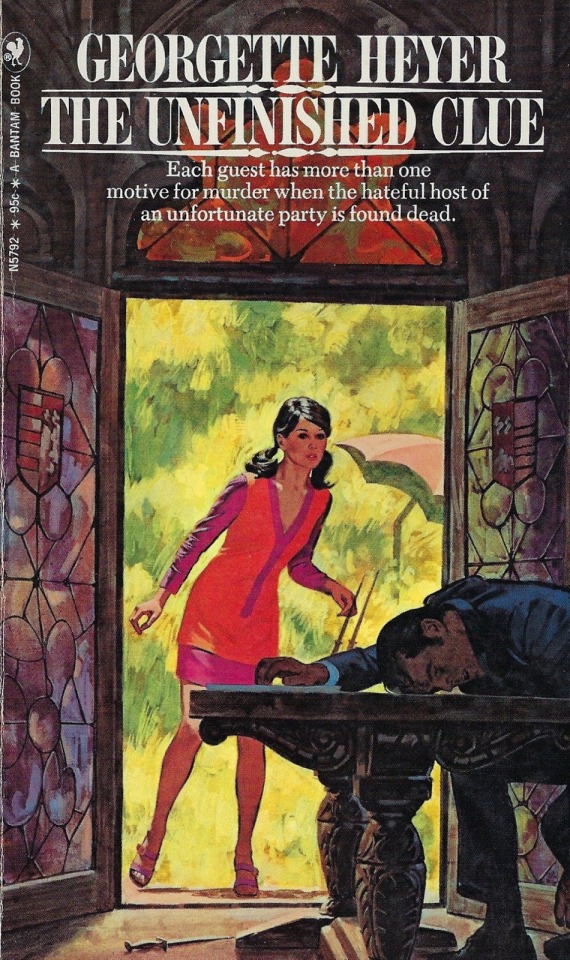
The Unfinished Clue by Georgette Heyer (1971)
Art by Mitchell Hooks
Bantam Books
#Paperback Cover#Paperback Art#Mitchell Hooks#Georgette Heyer#Mystery#Vintage#Art#Original Art#Before And After#Bantam Books#Bantam#The Unfinished Clue#1971#1970s#70s
17 notes
·
View notes
Text
Why the "Regency Era" is a fantasy realm
I've seen some interesting discussions back and forth about making historical fiction and particularly historical romance more inclusive, and I do think that there's some merit to the argument that merely inserting BIPOC as part of the ruling class erases many of the historic struggles people went through in terms of both class and race.
However, there's something that people don't seem to realize when it comes to the Regency Era: it's a fantasy realm that was primarily created by a single author.
Just as J.R.R. Tolkien published his Lord of the Rings books and created a world that would loom over the fantasy genre for decades to come, Georgette Heyer created the Regency Era in a way that I think people looking at the romance genre from the outside don't really understand.
Heyer wrote several historical romances and mystery novels prior to 1935, but it was with Regency Buck that she introduced her version of the Regency Era, a version that has actually been far more influential in popular culture than that of Jane Austen. (Most of the Austen adaptations pull more from Heyer than people realize, especially in terms of manners.) Heyer's world is all polite society heroes with a stiff upper lip and perhaps a tinge of rakishness, spirited yet virginal heroines, and a cast of supporting characters that range from younger brothers to elderly aunts.
There are very few hints that anyone outside the aristocracy is of any consequence, or even knows how to behave themselves, even when the middle-class daughter of a rich "Cit" marries an impoverished aristocrat in A Civil Contract. Sex exists, but only behind firmly closed doors and, for the heroines, only after marriage.
And what about the minorities that we know lived in Great Britain during the Regency Era? Not just the racial minorities that included Black citizens and former slaves as well as Indian immigrants, but also religious minorities? They pretty much don't exist in Heyer's world, apart from a few anti-Semitic stereotypes of rapacious Jewish moneylenders that make modern readers cringe when they stumble across an unbowdlerized edition. There are a few jokes and whispers about "unmanly" men, but that's about it for LGBTQIA+ representation as well.
Given what we now know about the Regency Era -- and we know a lot more than Heyer did when she was writing almost a hundred years ago -- we know that her view of Regency society was as artificial as Tolkien's world. Despite her use of historical sources, her romance novels are set in a fantasy world that melds the fashions and historical events of the Regency with the Victorian morals and mores that Heyer herself was raised with. The Regency Era was the late Georgian Era and was far more vulgar and free-wheeling than Heyer was willing to admit. She left out the people who didn't fit into her vision of the Regency, which showed an Anglo-Saxon ruling class that deserved to rule because of their natural superiority.
So my opinion about TV shows and films like Bridgerton and Mr. Malcolm's List that show an inclusive aristocracy in the Regency Era is ... well, it's all fantasy anyway, isn't it? Why not make the fantasy inclusive since the whole era is Heyer's illusion dressed up with a few historical details?
And if you want to try and argue that Heyer was historically accurate about everything, be prepared: I have sources that Heyer either ignored or did not have available to her. Look up Benjamin Silliman's 1803 journal of his trip to Great Britain sometime.
#mr malcolm’s list#historical romance#regency romance#historical romantic fiction#romance genre#diverse romance#bridgerton#georgette heyer
1K notes
·
View notes
Text
Thinking about These Old Shades made me think about how much I adore not just it but Devil’s Cub, Heyer’s novel about Avon and Leonie’s kid (what do you get when you mix Avon’s cold-blooded arrogance and Leonie’s temper and tendency to solve problems via violence? You get Vidal.)
This sequence is still one of the ones that makes me laugh the most in all of Heyer:
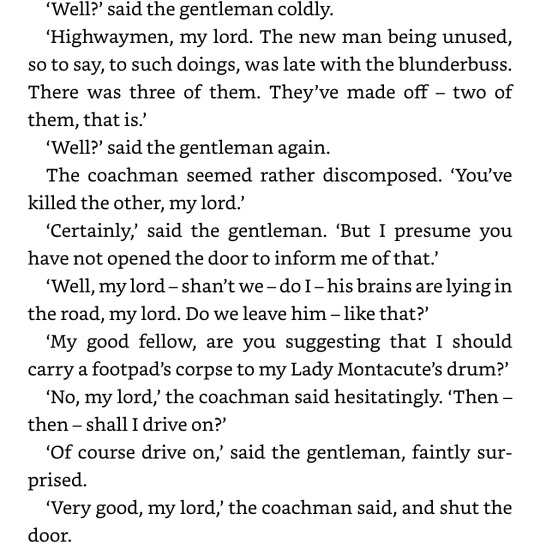
And then a little later:
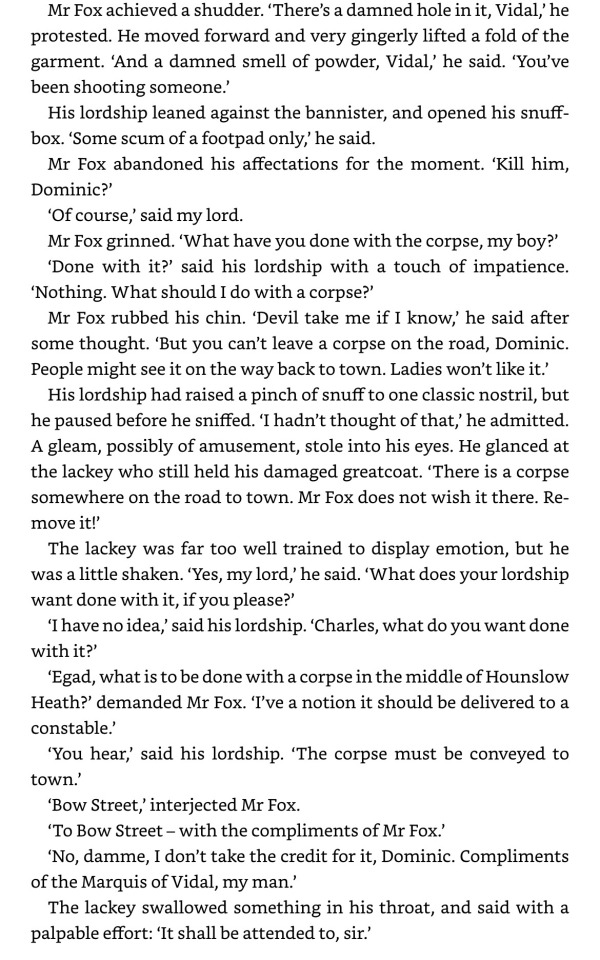
Best novel!
20 notes
·
View notes
Text
Is there a suggested reading order or starting point for Georgette Heyer's books? I have Faro's Daughter on my TBR based on a long ago suggestion and I'm just now looking at it and realizing how many books Heyer wrote!
I am also interested in her detective novels.
Is it just publication order? They seem to be standalone books from what I can tell.
23 notes
·
View notes
Text

the countess of rule and viscount winwood winners of the 1775 Biggest Idiots Award for excellence in bad plans and tomfoolery
#georgette heyer#the convenient marriage#horatia winwood#pelham winwood#siblings who develop crushing gambling addictions together stay together!#everyone go read this book#it’s 30 pages of age gap historical romance#300 pages of some of the dumbest 19 year olds alive trying and failing to trick one normal adult man#good stuff!#my art tag
24 notes
·
View notes
Text
I love thrifting! Look what I found at a pleasant price in a secondhand bookshop. The books aren't in perfect condition, and the saleswoman was apologising for their faults and little tears, but I couldn't care less...books have been becoming more and more expensive, I will read them in whatever state 🙏🏻📚♥️

I wonder which one I should start first!
18 notes
·
View notes
Text



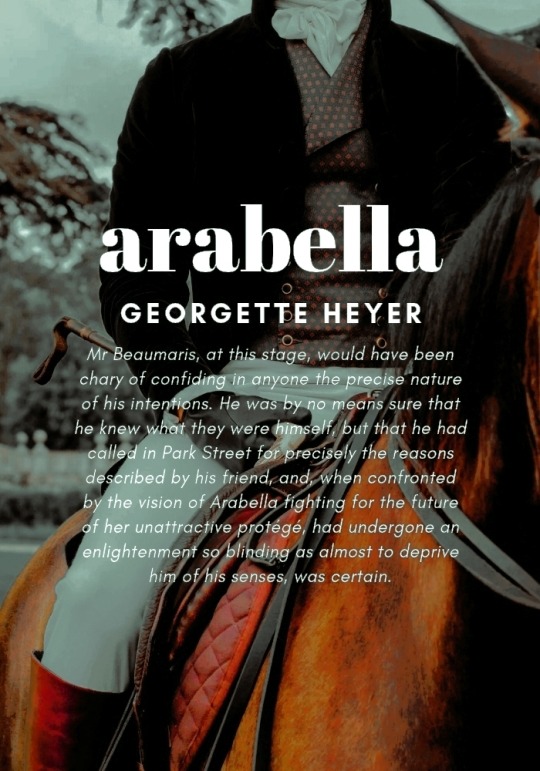

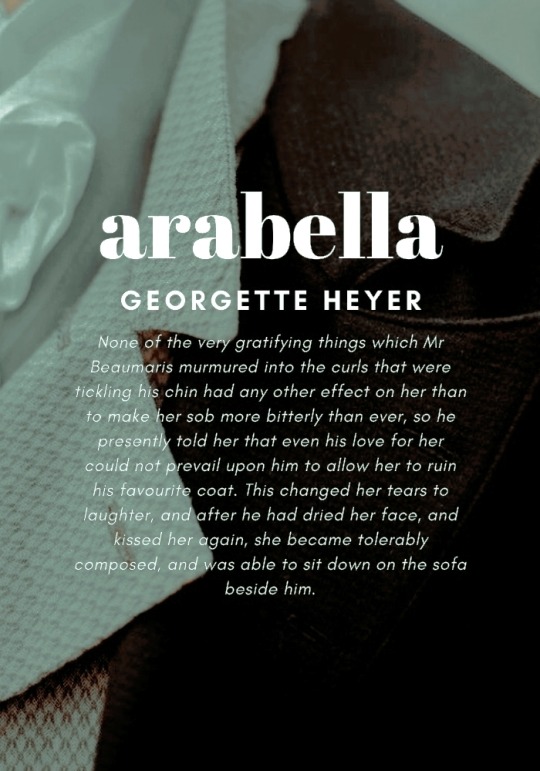
he glanced down at her. ‘tell me, miss tallant!—just why do you grant me the pleasure of driving you out in my curricle?’
she responded with perfect composure, but with that sparkle in her eye which he had encountered several times before: ‘you must know that it does me a great deal of good socially to be seen in your company, sir!’
he was so much surprised that momentarily he let his hands drop. the grays broke into a canter, and miss tallant kindly advised him to mind his horses. the most notable whip in the country thanked her for her reminder, and steadied his pair.
ARABELLA by georgette heyer
42 notes
·
View notes
Text
The Genius of Georgette Heyer
Georgette Heyer, an Englishwoman who lived from 1902 to 1974, is one of my favourite novelists, and I often reread her books or at least some parts of her books just to retire into an agreeable world. She wrote historical novels and thrillers, but I must admit I don’t like these very much. To me, Heyer’s genius was giving a breath of fresh air to the overworn genre of romance novels set in the English Regency era. (Although some of these Heyer novels like These Old Shades or The Convenient Marriage are set during High Rococo.)
In my opinion Heyer is highly underrated, standing in the shade of the more known Jane Austen or the Brontë sisters, books women most relate to when they want to read historical romance novels; Barbara Cartland is also more known, an author whose works are too saccharine for my taste.
Austen’s or the Brontë sister’s novels are not actually romances although they are often described as such; they are accurate portrayals of the society the authors lived in, romantic attachments playing a major role of course, but the focus is on the importance of family and society framing them and influencing them, for good or for bad.
I always found myself drawn to Heyer’s stories, long before I fell in love for the first time myself; the average romance novels get on my nerves. Now, and after having experienced love more than once, I can say that I wholly share Heyer’s approach that no matter how much in love you are has no influence on whether you and the object of your interest fit together.
The common trope in romances is “love conquers all”, which I personally dislike because it strips the protagonists of having their own mind and their own agenda. “Love” makes the choice for them; they don’t consciously choose to be with this person or other. Alternatively, the protagonists are “meant for each other” but “star-crossed”, i.e. circumstances or their own folly (or both) prevent them from being together, in which case the novel is framed as a tragedy and we are expected to cry buckets over it.
This is fortunately not the case in Heyer’s romance novels. Like Cartland, she writes of an England that was long gone before she was born, of course in a romanticized way. A lot of her stories mirror how the do’s and don’ts of those times, in particular in the upper class, influenced their lives and made it very difficult to navigate society.
Georgette Heyer’s genius is her capacity to imbue old tropes with new elements, and most importantly, to detach herself from the adage “love is all you need”. Without being sarcastic, she is at her best (in my opinion) when she weaves stories about people who realize that being in “love” is not that important at all. Her romances do end well, yet not due to the influence of a higher power but because the couples involved had the chance to realize who is the right partner for them to spend the rest of their lives with. Her heroines are usually headstrong, independent and reasonable; they may act on a whim or following their heart, but it is when they listen to reason - or are pushed to do so - that they finally get their happy ending.
Warning: spoilers ahead.
The Cinderella Trope
Arabella, and also Friday’s Child and The Convenient Marriage deal with the subject of a poor, or at least modest-living, female from a good family being launched into London’s high society by a strike of good fortune. In the latter two novels, this includes for them the chance to buy a heap of beautiful new clothes, strongly reminding of the Cinderella trope.
But Heyer would not be who she is if the novels would not be original in their own way: Arabella, far from being a modest, kind girl, pretends to be a rich heiress in order to “show his place” to a man who believed she wanted to ensnare him due to his wealth; Hero from Friday’s Child and Horatia from The Convenient Marriage both do not end but begin the story through marriage, and the plot unfolds as they slowly realize (and their respective spouses, too) that they have married the right person after all.
Finding Love in an Unexpected Place
In The Convenient Marriage, the Earl of Rule is ready to marry a certain girl to make a match, arranged years earlier, with a poor but very aristocratic family; it is on meeting her younger sister that he realizes “he does want to ally himself with the family”, to put it in his words.
In The Quiet Gentleman, as he has to deal with conspiracies and attempted murder, the protagonist Gervase Frant learns to put his trust in a female he first found dull, and who is not aristocratic the way he is.
In Sylvester or The Wicked Uncle, the Duke of Salford is at first disappointed by Phoebe, the girl his mother and her friend had chosen for him, and she doesn’t like him any better; they have to live through a number of adventures, together with friends and family, until they realize that they fit together perfectly.
In Sprig Muslin, Sir Gareth Ludlow overcomes his grief over his lost fiancé due to being responsible for Amanda, a girl of similar temper, and getting the chance to compare her to Lady Hester, a shy, unremarkable woman whom he liked but did not appreciate enough before. A beloved theme of Heyer’s romances is brought up here, too: having the same sense of humour shows to be indicative for two people fitting together.
In Charity Girl, notorious bachelor Viscount Desford gets involved both with a very beautiful girl named Lucasta and another, quite helpless damsel named Cherry, but none of them turn out to be right; instead, he finally realizes that Henrietta, an old friend of his, whom he had not wanted to marry years earlier, is the right mate for him after all.
In Faro’s Daughter, Mr Ravenscar gets interested in Deborah, a girl who works in a gaming house, which makes her free game to all men who visit it although she is a decent girl and only wants to earn a living for herself and the aunt who owns to place. A parallel is made through the protagonist’s niece Arabella, forever being in love with one guy or another but then refraining at the last moment. Finally, her uncle gives her a sound advice: that only if she will meet a man whom she will be ready to introduce to her family, she will know that he is the right man.
In False Colours, twin brothers Kit and Evelyn literally switch their places, one of them finding the right girl in the process by getting to know his brother’s prospected bride.
In The Foundling, the Duke of Sale is all but pushed to make an offer for Harriet, a girl he likes but is not in love with; but as he lives through some adventures and meets Belinda, who is very beautiful but also superficial, he learns to appreciate his future bride better and to realize that he would not want to be married to anyone else.
The Wrong Match
In An Infamous Army, Lady Worth wants to match up Colonel Charles Audley with Lucy, but then has to find out that the sweet, innocent-looking damsel is already secretly married, and that the temperamental Lady Barbara whom she had not liked for him is exactly what he needs since she has courage and straightforwardness.
Not Falling in Love at All
In A Civil Contract, Viscount Lynton, heir of an impoverished family, marries the shy and average-looking Jenny, the daughter of a rich, vulgar merchant to keep his family out of debt; she loves him but is aware of the fact that he does not requite her feelings, since he secretly loves Julia, a beautiful woman who does not have much money of her own. It is only as the plot thickens, the woman he loves marries another man and his wife gives him a son that he realizes “his Jenny” is the best wife he could have found.
Falling Out of Love
In Friday’s Child, Lord Sheringham believes to be in love with Isabella, an acclaimed beauty, until he has lived for a while with Hero, the young woman he had married on a whim.
“Bella with her airs and graces, her moods and her sharp tongue! No, thank you!”
Isabella on the other hand was about to contrive a brilliant match, but good sense makes her refuse it after all.
“When I thought how my life would be, that I would have to spend the rest of my life with him… oh, I could not!”
In The Grand Sophy, Cecilia is besotted with Augustus, a very romantic but unreliable young man. After a trying period spent nursing her small sister, who was critically ill, she finally realizes that the less romantic but more worthy Lord Charlbury who had offered for her in the first place is a much better partner for her.
In Cotillon, Kitty enters a fake engagement to teach a lesson to Jack, the man she is in love with; but when she comes to London for a while and learns more about him and the world, she slowly realizes that she was in love with a figment of her imagination, and that Freddy, the man she is engaged to, is a much better person.
“He seemed like all the heroes in the book, but I soon found that he is not like them at all.”
“No. I’m afraid I ain’t either.”
“Of course not! No one is.”
Heyer’s chief oeuvre in this respect is in my opinion Bath Tangle, where Serena and Lord Rotherham, both hot-tempered protagonists get engaged to someone much gentler than them, only for them to realize that they would not be happy with them. The heroine’s fiancé Hector gives her up amicably, having also found a much better life partner.
“You are a grander creature than I even imagined.”
“And you are the kindest and best of men, but not my love!”
The “Pride and Prejudice” Trope
The themes of Jane Austen’s famous novel is upended in Faro’s Daughter, where it is the man who has a strong prejudice against the girl, whom he inevitably believes to be a scheming, money-grabbing minx because she earns her living in a gaming house. The girl on the other hand has strong personal pride and would never accept money from anyone, or accept marrying or becoming the mistress of a man for whom she doesn’t care. Far from declaring his devotion to her, the man insults the woman repeatedly, before he finally realizes his mistake and also that she is the right mate for him.
The Beauty and the Beast Trope
In Black Sheep, the protagonists Abby and Fanny are aunt and niece, both at the same time in love with two members of the Calverleigh family who both have a bad reputation; but while Beauty (the niece) has to realize that the man she had fallen for was only after her fortune, non-Beauty (the not quite so pretty, but intelligent aunt) realizes that the uncommon Miles who gives nothing on society’s standards does care for people, and that he is the broad-minded, worldly-wise partner she exactly needs.
In Venetia, the person falling out of love is a Edward Yardley, a sidekick, who really ends up being disillusioned; but the story had made it abundantly clear that he had been a fool all along to believe that he and the protagonist would suit. Venetia, the Beauty, has to find out that she cannot tame the Beast Lord Damerel, and that she wouldn’t want to do it additionally. The Beast is not a bad man but someone who does not fit in with society; which makes him ideal for her since she does not, either.
This trope is brought to a climax in Lady of Quality, where the protagonist Annis, who never felt the slightest interest in the gentlemen she met, on getting to know the rude but protective and straightforward Oliver finally gets to fall in love, despite the fact that they argue frequently. At one time she muses that “Surely kindred spirits did not quarrel?” only to then add mentally, with a little self-irony, “How mawkish!”
If you are tired of Jane Austens’ prim heroines and the Brontë sister’s drama, I invite you: give Georgette Heyer a try. Her novels are entertaining but neither flat nor sentimental, and I always find new layers and aspects in them when I reread them after a few years. Her heroes of course live in an idealized world, but it’s just what you might need after a hard day’s work. 😊
#historical romance#literature#georgette heyer#jane austen#bronte sisters#english literature#critical reading#romance#reading#entertainment
85 notes
·
View notes
Photo
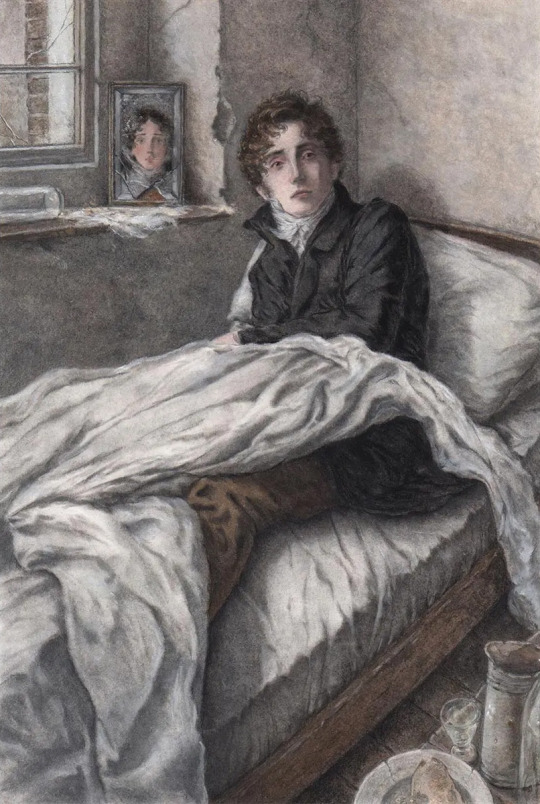

Sally Dunne’s illustrations for Georgette Heyer’s Arabella.
53 notes
·
View notes
Text
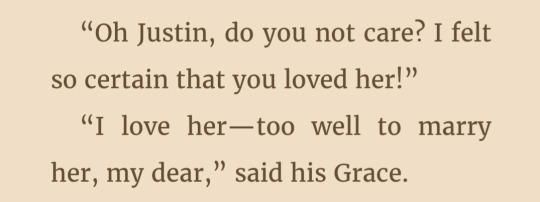

— These Old Shades

— Devil's Cub
28 notes
·
View notes
Link
Chapter 2: The second lie
Chapters: 2/3
Fandom: Good Omens - Neil Gaiman & Terry Pratchett, Good Omens (TV)
Rating: Explicit
Warnings: No Archive Warnings Apply
Relationships: Aziraphale/Crowley (Good Omens)
Characters: Aziraphale (Good Omens), Crowley (Good Omens)
Additional Tags: Alternate Universe - Human, lying, But not malicious lying, snowballing lies, Humor, Banter, Light-Hearted, fluff & smut, Sexual Tension, Pining, Romance, Happily Ever After, Fandom Trumps Hate, Aziraphale is "just enough of a bastard to be worth knowing" (Good Omens), Crowley's Love Language is Acts of Service (Good Omens), Midwesterner moves to the West Coast, Clever Aziraphale, Fandom Trumps Hate 2023
Series: Part 16 of Dannye's Good Omens Human AUs
Summary:
Aziraphale Fell did not mean for any of it to happen. Not that it wasn’t his fault— it was, completely. His one tiny lie, offered in the heat of the moment, seemed like swimming out just a few feet too far in the ocean and suddenly getting caught in the rip tide, with no way to control where you were going and when (if) you’d ever get back to solid ground. He never expected that one minor falsehood could change his life completely.
But this is a love story, after all.
It began with a house, a car, a flat tire, and the most beautiful man Aziraphale had ever seen.
Ao3 ~ DannyeChase.com ~ Linktree ~ Weird Wednesday writing prompts blog ~ Ko-fi ~ Newsletter
#Dannye writes#Good Omens#Good Omens human AU#Ineffable husbands#aziraphale#crowley#writing#writers on tumblr#fanfic#good omens fanfic#georgette heyer#arabella
22 notes
·
View notes
Text
Did anyone else who read the beginning of Georgette Heyer's These Old Shades go "Er...uhhh...um...what"?
It couldn't possibly be what it sounds like, could it?? It's Georgette Heyer?? Like I know the 1920s were a more innocent time but, uh...this innocent?? The Picture of Dorian Gray was only published like thirty years before this, and unless the general public didn't read into that either (even though the dude went to prison for sodomy), they should have a solid grasp of what gay subtext sound like.
I think this book is going to somehow insist this isn't same sex sexual predation by chapter two and it's going to fuck with my head.
Edit: Oh wait fairly certain this kid is actually a girl in disguise. D'oh. Obviously. The severe consent issues are all heterosexual again.
8 notes
·
View notes
Text
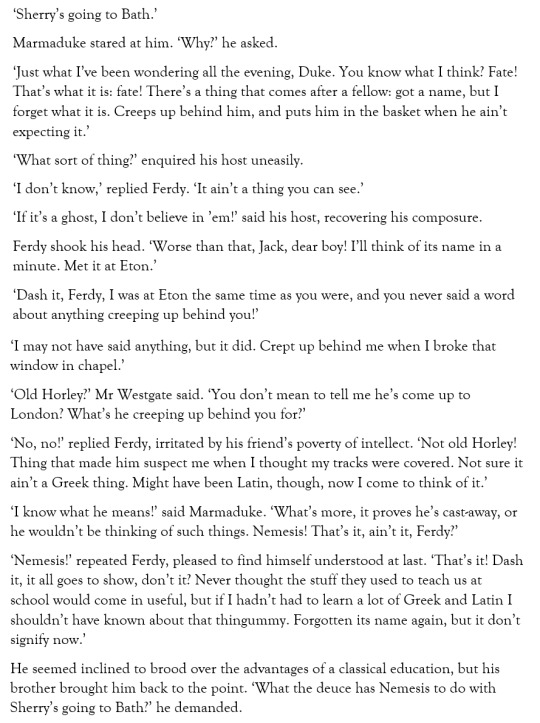
Georgette Heyer, Friday's Child
45 notes
·
View notes
Text
Does anyone have any book recs for some modern books set in the regency period with a more serious and historically accurate tone than Julia Quinn's books?
#books#book recs#bookblr#jane austen#regency#georgette heyer#historical fiction#history#regency era#napoleonic wars
32 notes
·
View notes
Text
Underrated aspect of Mary Challoner: the fact that she's got a massive crush on Vidal the entire book despite also being completely aware that he's a degenerate psycho. I love a girl with self-consciously terrible taste in men.
8 notes
·
View notes
Text


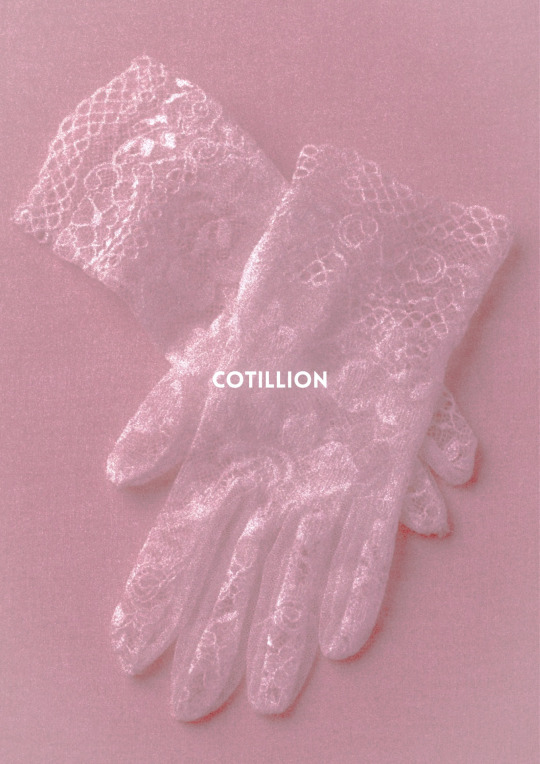
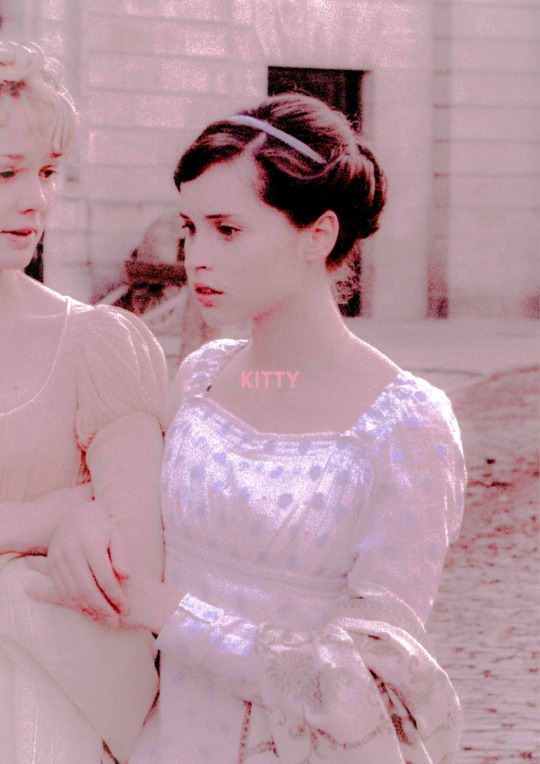

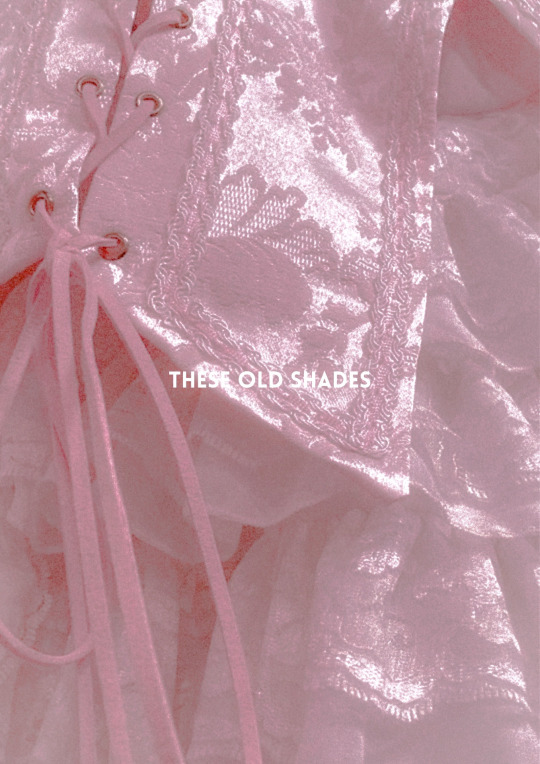


FAVORITE HEYER HEROINES. frederica merriville, kitty charing, léonie de st. vire & arabella tallant
insp.
#georgette heyer#historical romance#frederica#cotillion#these old shades#arabella#literature#litedit#pink aesthetic#mine
33 notes
·
View notes